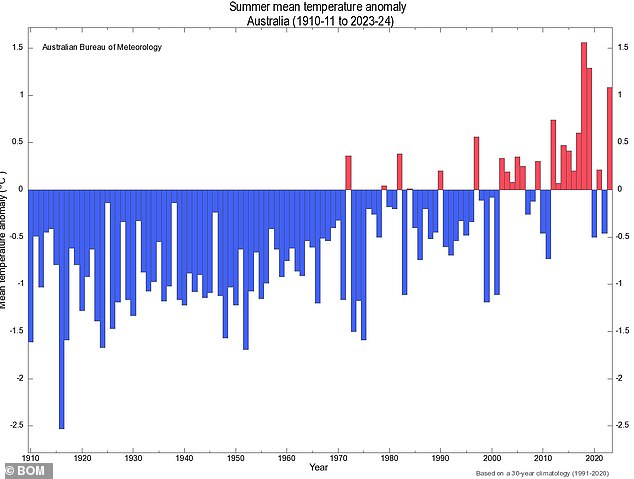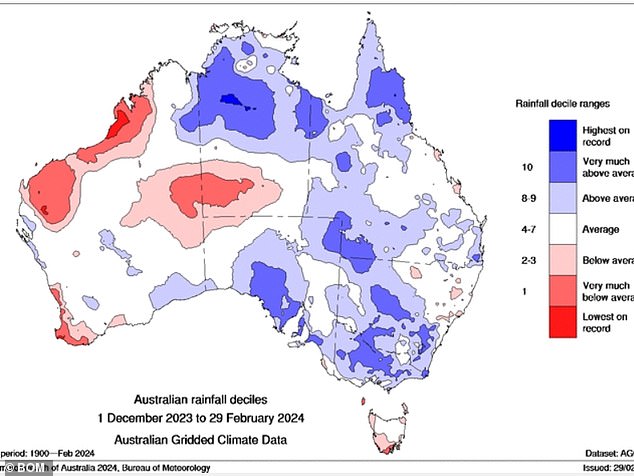<!–
<!–
<!– <!–
<!–
<!–
<!–
Australia has suffered the third hottest summer on record.
Statistics released by the Bureau of Meteorology this week revealed that the country in the December-February period was 1.62°C above the 30-year average of 1961-1990.
It is the third warmest summer since national records began in 1910, trailing only the previous records set in 2018-19 and 2019-20.
The national average maximum temperature was 1.73°C above average and the national average minimum temperature was 1.5°C above average.

Australia has endured its third hottest summer on record and figures (pictured) show the country experienced its third warmest December-February period.


The scorching temperatures created ideal conditions for people to cool off on the beach (sunbathers pictured)
Western Australia sweated through a particularly hot summer.
Its average temperature was 1.90°C above average, making it the hottest summer on record in the state.
“Mean maximum temperatures were above average in Tasmania, most of Western Australia, South Australia and New South Wales, the Northern Territory and Queensland and parts of northwest and far eastern Victoria,” the office said. .
“Mean summer minimum temperatures were above average across most of Australia and the highest recorded in south-east Queensland, north-east New South Wales, Cape York Peninsula and parts of inland Western Australia and extreme of the Northern Territory”.
The high averages were driven by heatwaves across most of the country in December and February, while January saw temperatures soar in Western Australia as well as the central and southern states.
The hottest day on record during the summer was 49.9°C on 18 February at Carnarvon Airport in Western Australia.
The coldest temperature recorded for the period was 4.6°C at Tasmania’s Mount Read on December 30.


The above-average temperatures were caused by heatwaves across the country, with Western Australia (file image from Nambung National Park) hardest hit by the extreme conditions.


The national average maximum temperature was 1.73°C above average and the national average minimum temperature was 1.5°C above average (weather map pictured)
It was also a wet summer with rainfall 18.9 percent above average.
While the season’s rainfall was above average across most of eastern Australia, “areas of western and central Western Australia, the southern Northern Territory and Tasmania had a drier than average summer,” the office said.
“Significant flooding, associated with tropical systems, affected large areas of northern Australia during the summer, while severe storms caused extensive flooding in parts of the east and south-east of the continent,” the office said.
Looking ahead to the fall, the office says to expect warmer days and nights.
“(The bureau’s long-range forecast) shows most of Australia has at least an 80 per cent chance of above-average temperatures this autumn,” the bureau said.

